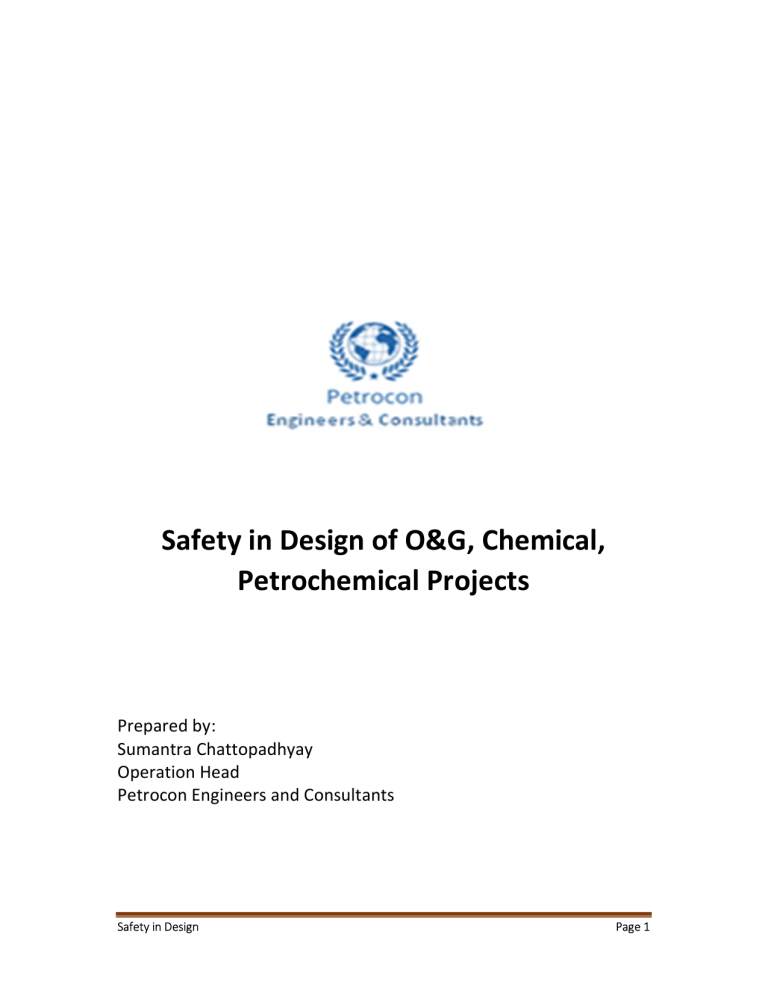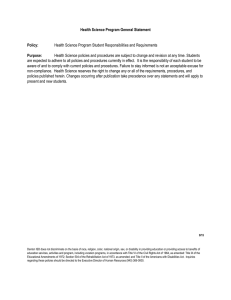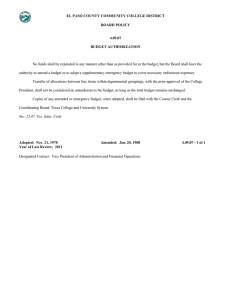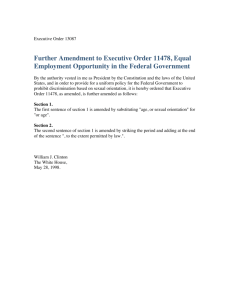
Safety in Design of O&G, Chemical,
Petrochemical Projects
Prepared by:
Sumantra Chattopadhyay
Operation Head
Petrocon Engineers and Consultants
Safety in Design
Page 1
1: Safety as Process in Design and Engineering
• The process design – three levels of check and approval, inter
disciplinary check
• Basic controls, alarms, and operator control
• Critical alarms, operator control, and manual intervention
• Automatic actions — emergency shutdown systems and safety interlock
systems
• Physical protection equipment such as pressure relief devices
• Physical mitigation systems such as spill containment dykes and area
classification
• Emergency response systems — for example, fire fighting
• Community emergency response — for example, notification and
evacuation
2: Multiple Layers of Safety
3: Design Stage
Adequate Design suitable for operations:
Safety in Design
Page 2
HAZID (Hazard Identification)
HAZOP (Hazard and Operability Study)
QRA (Quantitative Risk Assessment)
SIL (Safety Integrity Level)
De-pressurization and relief study
Dispersion
EERA (Escape, Evacuation and Rescue Analysis)
ESSA (Emergency Systems Survivability analysis)
Surge Analysis / Stress Analysis
ERDMP
EIA
Fire Water network
Fire Fighting System and extinguishers
Hazardous area classification
Layout as per recommended safety distances
3D Model Review for accessibility and constructability
4: HAZID
• Hazard identification at various stages of project
•
Brainstorming with the use of guidewords
•
Prompt study team members to identify hazards
•
HAZID typically focuses on plant layout drawing, as it aims to identify
intrinsic hazards.
•
HAZID is useful at an early stages of a new design so that all potential
hazards can be taken into account.
•
HAZID is also the technique of choice for identifying hazards as the first
stages of demonstration of ALARP.
5: HAZOP
The basic premise of HAZOPS is:
All hazardous material incidents are instigated by a deviation from the desired
operating state or condition.
Safety in Design
Page 3
If we can predict all deviations and analyze them before we operate a
new process then we can head off the undesired consequences.
6: Quantitative Risk Assessment (QRA)
HAZARD IDENTIFICATION METHODS:
- Process hazard checklist
- Hazard survey: DOW index
- HAZOP hazard & operability study
- Safety review
RISK ASSESSMENT:
- What can go wrong & how?
- What are the chances?
- Consequences?
EXTREMES
- Low probability
- Minimal consequences
7: Safety Integrity Level (SIL)
Safety Integrity Level (SIL) is a statistical representation of SIS when
demand occurs.
But in its simplest form it assesses:
-How high is your risk of an “undesired event”?
-What level of protection do you need?
Safety in Design
Page 4
-Do you have the required level of protection in your design?
Typical Safety Instrumented Systems (SIS):
-ESD
-F&G Detection System
-Blowdown System
8: Who needs a Hazard Review? (RRA)
If your work or process involves any of the following, you’ll need a Hazard
Review:
Use of pressure vessels or any equipment operating or potentially
reaching pressures exceeding 15 psig.
Use of flammable, compressed gases not housed in an approved,
ventilated gas cabinet.
Use of pyrophoric liquids or solids
Growth or use of dry nanoparticles
Use of Class 3b or Class 4 lasers
Use of toxic, corrosive or pyrophoric gases (e.g., anhydrous ammonia,
fluorine, silane, etc.)
Work equipment designed or constructed “in house”
Large scale use of hazardous chemicals (e.g., pilot plant scale as found in
Pulp & Paper pilot plant)
Lab use of hazardous chemicals in excess of one gallon
Bulk chemical storage and supply systems (e.g., bulk liquid nitrogen
systems)
Other work equipment or processes at the discretion of EHS
9: What is Safe Design?
Safe design is a process defined as the integration of hazard identification and
risk assessment methods early in the design process to eliminate or minimize
the risks of injury throughout the life of the product being designed. It
encompasses all design including facilities, hardware, systems, equipment,
products, tooling, materials, energy controls, layout, and configuration
Safety in Design
Page 5
The key elements that impact on achieving a safe design are.
Principle 1:
Persons with Control – persons who make decisions affecting the design of
products, facilities or processes are able to promote health and safety at the
source.
Principle 2:
Product Lifecycle – safe design applies to every stage in the lifecycle from
conception through to disposal. It involves eliminating hazards or minimizing
risks as early in the lifecycle as possible.
Principle 3:
Systematic Risk Management – the application of hazard identification, risk
assessment and risk control processes to achieve safe design.
Principle 4:
Safe Design Knowledge and Capability – should be either demonstrated or
acquired by persons with control over design.
Principle 5:
Information Transfer – effective communication and documentation of design
and risk control information between all persons involved in the phases of the
lifecycle is essential for the safe design approach. These principles have been
derived from Towards a Regulatory Regime for Safe Design2; with some
modification following public consultation.
10: Codes and Standards
OISD
PESO
OSHA
NFPA
Oil Industry Safety Directorate
Petroleum and Explosives Safety Organization
Occupational Safety and Health Administration
PNGRB
Petroleum and Natural Gas Regulatory Board
National Fire Protection Association
Factories Act 1948
Safety in Design
Page 6
BIS Standards
National Building Code
IS codes
ASTM
ISO
ASME
ASHRAE
AWS
AWWA
CECC
IMO
EN
IEEE
IEC
ISA
MSS
TEMA
IP
IBR
AGA
American Society for Testing and Materials
American National Standards Institute
American Petroleum Institute
American Society of Mechanical Engineers
American Society of Heating, Refrigerating and AirConditioning Engineers
American Water Works Association
Institute of Electrical and Electronics Engineers
International Electrotechnical Commission
MSS-Manufacturers Standardization Society
Tubular Exchanger Manufacturers’ Association
India Boiler and Pressure Vessel Code
American Gas Association
11: Legal Codes:
The specific safety standards applicable to are indicative and are for the
Contractors reference and are not limited to:
The Building and Other Construction Workers Act 1996 & The Building
and Other Construction Workers Rules 1998
Indian Electricity Act (amendment) 2004 &
The Indian Electricity Rules, 1956
Safety in Design
Page 7
Central Motor Vehicles Act 1988 &
Central Motor Vehicles Rules, 1989 /amended 2001
The Environment (Protection) Act 1986 amended 1991 &
The Environment (Protection) Rules 1986, amended 2004
Hazardous Wastes (management,
movement) Rules 2008 / 2009
handling
and
trans-boundary
The Air (Prevention and control of Pollution) Act, 1981
The Water (Prevention and Control of Pollution) Act, 1974
The Chemical Accidents (Emergency Planning, Preparedness &
Response) Rules, 1996 / 2000
Manufacture, Storage and Import of Hazardous Chemicals Rules 1989
Noise Pollution (Regulation & control) Rules, amended 2010
The Batteries (management & handling) Rules 2001 / amended 2010
Biomedical Waste (management & handling) Rules 1998/ amended 2003
The Explosive Act 1884. & the Explosive Rules, 1983.
The Explosives substance Act 1908.
The Static and Mobile Pressure Vessel (unfired) Rules, 1981
The Gas Cylinder Rules 1991, amendments 2004.
The Petroleum Act 1934 & Petroleum Rules 1976
The Public Liability Insurance Act 1991
The Workmen’s Compensation Act |9}~
The Contract Labour (Regulation & abolition) Act, 1970
The Child Labour (Prohibitions & Regulations) Act, 1986 and Rules 1950
The Minimum Wages Act, 1948 and Rules 1950
Employee State Insurance (Central Rules), 1950
The Recycled Plastic Usage Rules, 1998
Notification, Central Ground Water Board, Act January 1997
Notification on Control of Noise from Diesel Generator (DG) sets, 2002
Safety in Design
Page 8
Notification on Fly ash utilization, Sept 1999 as amended in August 2003
National Building Code, 2005
Indian Road Congress Code IRC: SP: 55-}{{| ‘Guidelines on Safety in Road
Construction Zones
OSID - Guidelines 156 (Oil industry Safety Directorate), Fire Protection
Facilities for port oil terminals.
Guidelines Fire Advisor, CCE & DG FASLI, Government of India.
National fire Codes (National Fire Protection Association -USA)
Drill manual for the Fire Service of India.
ISPS (International Ship & Port Facility Security) code (2003 Edition)
Inland vessel Act 1917
Guidelines from IFC (international Finance Corporation (world bank
group)
India Railway’s “Research Designs and Standards Organization (RDSO)”
guidelines and railway safety regulations.
Environment Codes:
The Water (Prevention & Control of Pollution) Act 1974, amended 2003
and Rules,
The Air (Prevention & Control of Pollution) Act, 1981 and Rules,
Environment (Protection) Act, 1986 amended 1991 and Environment
Protection Rules and amendments 2016,
Hazardous and Other Wastes (Management and Transboundary
Movement) Rules, 2016.
The Chemical Accidents (Emergency Planning, Preparedness &
Response) Rules, 1996 / 2000
The Batteries (management & handling) Rules 2001 / amended 2010
Manufacture, Storage & Import of Hazardous Chemicals Rules, 1989 and
amendments,
Noise (Pollution & Control) rules 2000 and amendments rules 2017,
Ground Water (Regulation, development and Management) Act 2005,
Biomedical Waste (management & handling) Rules 1998/ amended 2003
The Recycled Plastic Usage Rules, 1998
Notification on Control of Noise from Diesel Generator (DG) sets, 2002
Safety in Design
Page 9
Notification on Fly ash utilization, Sept 1999 as amended in August 2003
Safety:
OISD Guidelines,
The Petroleum Act 1934 and Rules 2002,
Gas Cylinders Rules 2016, amended 2018,
Static & Mobile Pressure Vessels (Unfired) Rules, 1981,
Motor Vehicles Act 1988 and Rules 1989 (amended 2001),
Explosives Act 1884 and Rules 2013,
Indian Electricity Act (amendment) 2004 and Rules 1956,
The Public Liability Insurance Act, 1991 and Rules,
National Building and Other Construction Act 1996 and Rule 1998 and
amendments,
The Batteries (management & handling) Rules 2001 / amended 2010
The Explosives substance Act 1908.
The Static and Mobile Pressure Vessel (unfired) Rules, 1981
The Gas Cylinder Rules 1991, amendments 2004.
The Petroleum Act 1934 & Petroleum Rules 1976
The Workmen’s Compensation Act 1923
The Contract Labour (Regulation & abolition) Act, 1970
The Child Labour (Prohibitions & Regulations) Act, 1986 and Rules 1950
The Minimum Wages Act, 1948 and Rules 1950
Employee State Insurance (Central Rules), 195
National Building Code, 2005
Indian Road Congress Code IRC: SP: 55-2001 ‘Guidelines on Safety in
Road Construction Zones
OSID - Guidelines 156 (Oil industry Safety Directorate), Fire Protection
Facilities for port oil terminals.
Guidelines Fire Advisor, CCE & DG FASLI, Government of India.
National fire Codes (National Fire Protection Association -USA)
Drill manual for the Fire Service of India.
ISPS ( International Ship & Port Facility Security) code (2003 Edition)
Inland vessel Act 1917
Guidelines from IFC (international Finance Corporation (world bank
group)
India Railway’s “Research Designs and Standards Organization
(RDSO)”guidelines and railway safety regulations.
Safety in Design
Page 10
International Standards, Guidelines & Certifications
The works should be undertaken in accordance with the applicable
international guidelines, standards and specifications on IMS.
The important Indian Standards and British Standards as applicable to
the work of the specific Contract and Contractor shall participate and
comply for requirements asked by owner to fulfil Integrated
Management System requirements.
Every Contractor shall aim to achieve certifications listed below during
the execution:
OHSAS 18001:2007 / ISO 45001 Occupational Health and Safety
Management System and / or
ISO 14001:2015 Environment protection standard
11: Company Guidelines and Checklists
Effective engineering design is accomplished in combination of use of
applicable international / national / local rules and regulations and applicable
company standards and checklists. The company standards and checklists are
prepared based on years of experience.
One of the principal aspect of design that defines a safe design is easy access
for plat operation and maintenance. If such access is not properly planned in
design stage accidents like fall from height, that because of faulty valve
operation, clash of vehicle with structures etc. are bound to happen. Below is
given a table that gives the list of access checks are made in our design.
Access Requirements
Type of Access
Item Being Accessed
-Fig 8 blinds (any size without adjacent valves),Flow, pressure and
Temporary
mobile
temporary
etc.
Safety in Design
ladder,
steps,
platform,
temperature instrumentation mounted in lines up to 4.6m BOP above
grade and up to 2.6m BOP above main structure platform levels
-Manhole and hand holes up to 3.75m above grade and 2.5m above
main structure platform levels
Page 11
-Valves 1.1/2" and smaller
-Level gauges
-Temperature and pressure instrumentation above the elevations
Permanent ladder
stated previously
with cage
-Items that require occasional operating access including valves,
spectacle blind and motor operated valves, and heater stack
sampling points.
-Man ways above grade on equipment.
Type of Access
Permanent platform
with item accessed
from platform edge
(i.e. a maximum of
500mm from the
platform edge and
1500mm above the
platform height).
Item Being Accessed
-Valves 2" and larger
-Relief valves 3" inlet size and smaller
-Level controllers and switches
-Fig 8 blinds 3" and smaller
-Flow instrumentation above the elevations stated previously
-Sampling points
-Hand holes
-Steam distribution manifolds
-Relief valves 4" inlet size and larger
-Fig 8 blinds and blind spacers 4" and larger
Permanent platform
with item accessed
from above and in
board of platform
-Motor operated valves
-Control valves
-Manholes above elevations stated previously
-Heat exchanger units
-Clean out points
-Catalyst loading flanges
Safety in Design
Page 12
Ladders and Stairs
For providing platform ladder & staircase following guidelines shall be
followed :
-Two means of access (i.e. two ladders or one ladder and one stair case)
shall be provided for any elevated platform, which serves three or more
vessels & for battery limit valves operating platforms.
-Platforms, ladders & stairways shall be consistent with access &
safety requirements.
-Stairway for tanks to be provided on upstream of predominant wind
direction.
(1) Platform at elevated structure:
-Dual access (i.e. one staircase and one ladder) shall be provided at large
elevated structure if any part of platform has more than 22.65m (75ft) of
travel.
-Fired heaters located adjacent to one another shall have interconnecting platforms at various elevations.
-Inter-connecting platforms between adjacent towers shall be provided,
wherever feasible, taking into consideration expansion of towers.
(2) Plaforms with stair access shall be provided only for:
-Location at which normal monitoring (once a day or more) is required or
where samples are taken.
-Location where vessels or equipment items have operator attention
such as compressors, heaters, boilers etc.
-Main pipe rack at battery limits
(3) Platforms with ladder access shall be provided for:
-Items that require occasional operating access including valves,
spectacle blind and motor operated valves, heater stack sampling
points.
-Man ways above grade on equipment.
Minimum Clearances in process plants
ITEM
DESCRIPTION
CLEARANCES
Roads
Width of primary and secondary roads, excluding
hard shoulder (where major maintenance
10000/6000
vehicles are expected to pass)
Safety in Design
Page 13
Headroom for primary roads (where major rigging 7000
maintenance vehicles are expected to pass)
Headroom over secondary roads
6000
Minimum inside edge turning radius for primary
15000
Minimum inside edge turning radius for
secondary
10000
roads
Width for plant access roads
4000
Headroom for plant access roads
4500
Minimum inside edge turning radius for plant
6000
access roads
Railroads
6700
ITEM
Headroom over through railroads (from top of
rail)
DESCRIPTION
Structural access
Headroom for main operating aisles / pedestrian
2700/2100
walkways and
walkway
maintenance
Width of stairway (treads)
800
clearances
Vertical rise of stairways (1 flight)
5000 max
Vertical rise of ladders (between platforms)
9000 max
Width for main operating aisles / pedestrian
1000/750
CLEARANCES
walkway
Access way under
Access required for vehicular equipment
4000 (Hor.)
piperacks
Access required for potable (temporary) service
Equipment
3000 (Ver.)
Vessels (Vertical and
Clearance between pipe rack and vessel
4000
Horizontal)
Clearance between vessels
3000
Pump
Clear aisle between two adjacent
900
pumps
All pumps of a rating more than or equal to 55kw shall be provided with a
monorail.
Pump
Pumps shall be kept outside the pipe rack with pump discharge nozzle
kept at a distance of minimum 1 meter from pipe rack and motor towards
rack and also 4m horizontal clearance beneath the pipe rack shall be
ensured while
placing the pump.
Safety in Design
Page 14
ITEM
Platform
Vertical &
DESCRIPTION
CLEARANCES
Distance of platform below manhole center
1050 max
750 preferred
Horizontal
Vessel
Clearance in front of manhole
Sheels
Platform extension to side of manhole from
Centerline of manhole.
Vessel Top
Distance of platform below face of manhole
Head
flange
Nominal manhole diameter
175 to 200
1050(If special case)
Width of platform from three sides of the
manhole
Vertical
Distance of platform below top flange of
Exchanger
channel or bonnet
Width of platform from three sides of flange
Furnaces
760
760
1500 max
760
Width of the platform at side of horizontal and 1000
vertical tube furnace
Width of the platform at ends of horizontal
tube
NOTE
1000
furnace
Platform area around the manholes should be increased on packed vessels where the
manhole is used for filling or removing the vessel packing.
Design Safety Checklist
To be a Safe Standard
N/A
No
Yes
Rectified
No
Yes
A. Is the P&ID, Piping layout, Isometrics
prepared as per the relevant codes?
Safety in Design
Page 15
Yes
Ensure the relevant code for all Mechanical
equipment’s & design standards are specified
Pumps, loading arms, strainers , Pig launchers
etc.
Ensure Piping thickness calculation meet
system design requirement such as Design
pressure and design temperature.
Yes
To be a
Safe
Rectified
Standard
N/A
All actuators ,mechanical equipment’s and
other electrical components to be designed
based on Hazardous and non-hazardous area
classification
No
Yes
To be a
Safe
Standard
Rect
ified
No
Yes
Yes
B. Does Pumps safe for operating?
Check the general notes, instructions, format,
drawing no. painting scheme are covered.
Check the pressure safety valve set point.
Yes
Check the suction side strainer mesh
condition.
Check the valve position for both recirculation
and Pressure relief line.
Yes
Yes
Yes
C. Is Loading Arm safe?
Check the general notes, instructions, format,
drawing no. are covered.
Check the rest boom position before operating
Loading arm.
Check the all instrumentation associated with
the Loading Arm
Yes
Check the Folding staircase swing condition
Yes
Yes
Yes
D. Is Strainer in operating condition?
Check the DPG/ DPT working condition N/A
associated with Strainer
Check the mesh condition before operating. N/A
Mesh to be replaced based on DPT/DPG
condition.
Check the cover of the Strainer at fully closed N/A
condition. doc.
Yes
Yes
Yes
E. Pig Launcher design safe?
Check the general notes, instructions, format
of data sheet, document no. are covered.
Check the Pig Signaler condition and flap
position.
Quick Opening End Closure (QOEC)
condition to be checked
QOEC safety bleed valve to be checked.
Yes
Yes
Yes
Yes
F. Is Piping design safe?
Safety in Design
Page 16
Yes
Check the general notes, instructions, format
of data sheet, document no. are covered.
To be a
Safe
Rectified
Standard
N/A
No
Check the fasteners are hot dip galvanized
and protrude minimum 3 threads outside the
flange hole.
Check the insulation thickness is adequate as
per the design requirement.
Check the Heat tracing cable installed properly
as per the design requirement.
Yes
To be a
Safe
Standard
No
Rect
ified
Yes
Yes
Yes
Yes
G. Is Valves design safe?
Check the general notes, instructions, format
of data sheet, document no. are covered.
Check all the valves should have proper
tagging on the valve body.
Check the valve position as per the design
requirement. Valves which are to be at Normal
closed/open condition as per the P&ID /
Operating philosophy to be followed.
All stud bolt to be of standard length based on
the pressure rating of 150#, 300# etc. unless
specific requirement.
Safety in Design
Yes
Yes
Yes
Yes
Page 17


